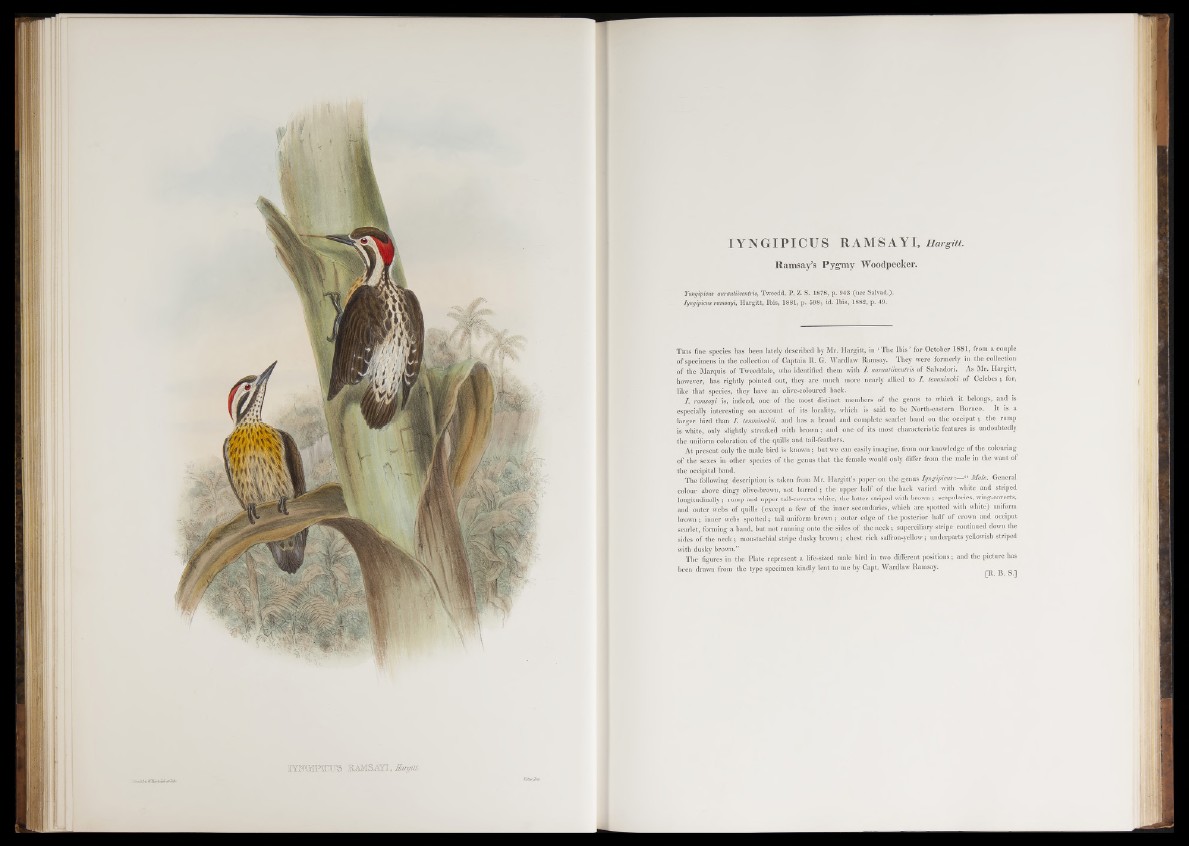
IXHiHPICDS KAMSAX1 , B a r g itb .
IYNGIPICUS RAMSAYI, Hargitt.
Ramsay’s Pyg'my Woodpecker.
Yungipicus aurantiiventris, Tweedd. P. Z. S. 1878, p. 943 (nee Salvad.).
Iyngipicus ramsayi, Hargitt, Ibis, 1881, p. 598; id. Ibis, 1882, p. 49.
T his fine species has been lately described by Mr. Hargitt, in ‘The Ibis’ for October 1881, from a couple
of specimens in the collection of Captain R. G. Wardlaw Ramsay. They were formerly in the collection
of the Marquis of Tweeddale, who identified them with I . aurantiiventris of Salvadori. As Mr. Hargitt,
however, has rightly pointed out, they are much more nearly allied to I. temmincki of Celebes; for,
like that species, they have an olive-coloured back.
I . ramsayi is, indeed, one of the most distinct members of the genus to which it belongs, and is
especially interesting on account of its locality, which is said to be North-eastern Borneo. It is a
larger bird than I. temminckii, and has a broad and complete scarlet band on the occiput; the rump
is white, only slightly streaked with brown; and one o f its most characteristic features is undoubtedly
the uniform coloration of the quills and tail-feathers.
At present only the male bird is known; but we can easily imagine, from our knowledge of the colouring
of the sexes in other species o f the genus that the female would only differ from the male in the want of
the occipital band.
The following description is taken from Mr. Hargitt’s paper on the genus Iyngipicus Male. General
colour above dingy olive-brown, not barred; the upper half of the back varied with white and striped
longitudinally; rump and upper tail-coverts white, the latter striped with brown ; scapularies, wing-coverts,
and outer webs of quills (except a few of the inner secondaries, which are spotted with white) uniform
brown; inner webs spotted; tail uniform brown; outer edge of the posterior half of crown and occiput
scarlet, forming a band, but not running onto the sides of the neck; superciliary stripe continued down the
sides of the neck ; moustachial stripe dusky brown; chest rich saffron-yellow; underparts yellowish striped
with dusky brown.”
The fio-ures in the Plate represent a life-sized male bird in two different positions; and the picture has
been drawn from the type specimen kindly lent to me by Capt. Wardlaw Ramsay.
[R . J3. o.J